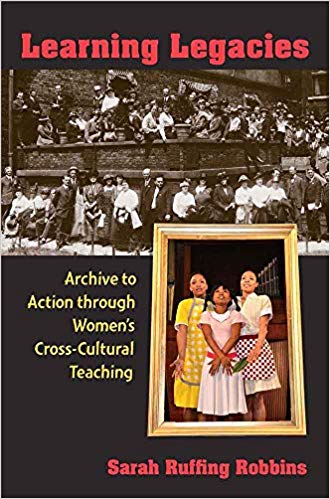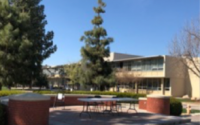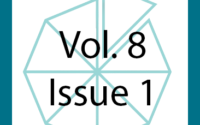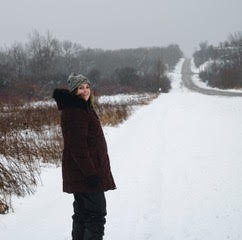Book Review: Robbins’ Learning Legacies
Robbins, Sarah Ruffing. Learning Legacies: Archive to Action through Women’s Cross-Cultural Teaching. University of Michigan Press, 2017.

In February 2018, in the wake of the Parkland shooting, President Trump held a handwritten card while hosting a listening session on gun violence that prompted him to show empathy towards survivors. The card reminded him to ask about others’ experiences, and to tell them that he was listening to their stories. Immediately widespread criticism over the need for an “empathy card” spread across social media, while at the same time that same media was bemoaning its own “fatigue” and difficulty maintaining a level of care over today’s political climate (Bermila). It seems that the subject of empathy, what it is and how to cultivate it, has long been an ongoing topic of concern. In 2011, a University of Michigan study found that two-thirds to three-quarters of college students were nearly 50% less empathetic than 30 years ago. The study points in large part to social media habits as distancing us from interpersonal relationships with each other. The authors of the study point out that the consequences of declining empathy go beyond declining rates of volunteerism and charitable giving to more important consequences related to the way we connect with each other, directly impacting our community structure (Konrath, O’Brien, and Hsing). In a way, these small connections give us a sense of control, combating collective “psychic numbing” (Lifton).
While Sarah Ruffing Robbins likely didn’t have this study in mind when writing, Learning Legacies: Archive to Action through Women’s Cross-Cultural Teaching, she certainly wrote the book with the self-awareness of someone who has spent a considerable amount of time talking to students and professionals, and engaging with archives during culturally defining historical periods. She attempts to understand the way that empathetic relationships can be cultivated and carry forward in the classroom and beyond. Learning Legacies represents a significant contribution towards providing a blueprint for how to actively foster intercultural communications, and how to extend imaginative social justice possibilities within communities. As a secondary goal, Robbins seeks to show how the humanities, arts, and education offer critical tools in achieving the cross cultural analysis and personal reflection necessary for preparing students for today’s social climate.
Robbins begins by outlining her ambitious project in the first chapter, including her methodology and key concepts. The book is organized around three educational moments in the United States between the nineteenth and twentieth centuries that Robbins identifies as critical moments when learners from marginalized backgrounds were at odds with prevailing social hierarchies. These historical moments include: Spelman College’s early years educating African-American women in the post-slavery era, Jane Addams Hull House programs that supported immigrant education and community integration, and the Carlisle boarding school movement which sought to culturally assimilate Native Americans through educational practices. Her analysis includes archived counternarratives, or stories from marginalized people who push back against power systems, and her own reflective narrative based on collaborations inspired by these archives and community partnerships. Storytelling is central to Robbins’ work, specifically “learning legacies,” which tell a “story about an intercultural learning process” and make use out of “collaborative epistemologies toward potential social agency” (4). As such, archives are not simply static texts, but rather accumulating bodies of “knowledge” that invite interaction, interpretation, and evolving meaning (19). Throughout, she is careful to demonstrate accountability to her sources by naming their contributions and pointing out places where her analysis might fall short. The result is a thoughtful model for approaching intercultural social advocacy research.
In the next two chapters, Robbins begins her archival analysis of counternarratives from a scholarly perspective. In chapter 2 she highlights the ways in which cross-racial and cross-institutional collaborations bring depth to archival research, and therefore community relationships. She identifies counternarratives within the Spellman Messenger where African American women created social agency through their “ongoing strategies for telling stories” about the College and its “mission” (42). To this day, these stories inspire Founder’s Day performances, continuing the legacy of “accruing” community “cultural capital” with direct implications for identity formation and agency (59). In fact, Robbins traces the archive’s reach to her own present-day professional collaborations, arguing that the archives offer instruction for white scholars on how to productively collaborate and support marginalized colleagues. Through engagement, “we acknowledge how value systems operate in a culture over time, but also how they can be resisted and revised,” with an emphasis on listening, reflecting, and collaborative knowledge making, a theme which she revisits in chapter 5 (74, 78). I found the specific suggestions in this section particularly helpful in considering how archival pedagogy and collaborations productively bridge intercultural work.
Robbins continues this line of investigation in her third chapter when describing the Jane Addams Hull-House archive where immigrant women discovered social agency through collaborative leadership and cross-cultural exchanges at the settlement house. As the women created arts and literacy programs, Addams cultivated a story-based community outreach program that supported their educational work, a legacy that continues through the present day. Robbins reads Addams’s extensive archive as a counternarrative that maintains a community perspective, allowing current archival users to access its content as a learning resource. Specifically, Addams teaches us that social justice “interventions” are always in process, and “cultivating interpersonal relationships and shared authority” are key components of knowledge building that rely on storytelling as a central methodology of this process (87). Robbins repositions Addams as a leading innovator and theorist who has largely been ignored in scholarship. Together, the second and third chapters demonstrate how community collaboration within the humanities tradition offers “transportable” learning legacies and social agency that can be used to support community engagement advocacy practices. I found these chapters useful in thinking about how archival practices can be brought into conversation with communities, especially within the context of a socially aware pedagogy that strives to create space and recognition of agency.
Not all archives offer inherent lessons to carry forward, especially if those archives represent assimilationist goals. Chapters four and five mark a departure from the first half of the book, focusing on Robbins’ personal learning process in encountering archives of absence. By tracing the counternarratives of Native American boarding schools, she recognizes the ways in which archives demand attention through critique and empathetic care in cultivating alternative archives. In chapter 4, she traces the writing of Native students and educators at the Carlisle School as they critique white revisionist history tools that uphold power structures, thus establishing agency through the creation of a “Native Archive” (139). Through these writers, we are forced to move beyond simply recognizing oppression, but rather towards “empathetic visioning and listening” (176). Robbins then shows in chapter 5 how larger organizations such as the National Museum of the American Indian (NMAI) demonstrate a continuing commitment to these learning legacies through community engagement practices that honor resistance and restorative narratives addressing broader audiences. Robbins points to the museum’s ongoing archival development as critical to developing alternative models of education and collaboration. These chapters then lead to the coda, where Robbins provides specific pedagogy and lesson plans demonstrating how archival engagement, done with empathy and care, leads to critical consciousness, community collaboration, and social justice action. It is fair to say that I found these last chapters powerful given that so many archives I’ve experienced have significant silences evident through their curation practices. I appreciated the guidance on how to teach students rhetorical and critical awareness around archival work, and the need for making a space for all community voices to be heard. In many ways, these last chapters could have been a book of their own given the scope of research and application Robbins presents.
While I don’t have any specific criticisms of the book, I do offer a word of warning. Robbins’ book is not one to be read lightly or passively. She focuses on many examples throughout her chapters with a level of depth and investment that demands the same critical consciousness that she demonstrates in her research. At one point she promises, “I have tried to value relationality, to exercise responsibility, to convey respect, and to uphold reciprocity” in reference to Sean Wilson’s “indigenous research methods” (214). This is not a small task, and to do so truly places demands not only on the writer, but the reader as well in terms of carrying the book’s lessons forward. For Robbins, counternarratives demand continued resistance through cross-cultural collaboration in building new learning legacies, while honoring the narratives that have come before us. As such, our pedagogical orientation shifts to “research with” rather than “research on” or about others within our communities, attuned especially towards the storytelling tradition and methodologies available within the humanities (33). Using Robbins’ model of care, it is possible to present powerful social activist possibilities in the classroom by making power structures visible.
Robbins’ greatest contribution in this book is her ability to move analysis beyond a passive stance, showing how archives can teach and inspire collaboration beyond their initial historical moment through the use of reflection. I appreciated her model of critical consciousness, especially as someone who strives to incorporate archival work into my own classroom with similar social justice goals. I’ll never forget the first time I brought students to our state archive to explore local environmental issues. My students observed a lack of minority representation on certain issues, which led to a powerful discussion on archival absence. The next semester, the archivist and I worked together to make this absence a focal point. While I’m happy with the way the conversation deepened the cross-cultural connections in my classes, I feel like I could have used Robbins’ blueprint to provide further critical questions and direction for carrying those conversations beyond the classroom. I see this book as a resource for any educator looking to incorporate historical voices into discussions on collaboration and social agency. This is not to say that the book promises any guaranteed solutions, but Robbins offers hopeful ground for cultivating a culture of care and empathy in the classroom. Such a movement towards imaginative social possibility is clearly called for in today’s political moment.
Works Cited
Burmila, Ed. “The Year of Being Completely Overwhelmed by Trump.” Rolling Stone, 14 Dec. 2017, www.rollingstone.com/politics/features/the-year-of-being-completely-overwhelmed-by-trump-w513802.
Konrath, Sara, Edward O’Brien, and Courtney Hsing. “Changes in Dispositional Empathy in American College Students Over Time: A Meta-Analysis.” Personality and Social Psychology Review, vol. 15, no. 2, pp. 180–198.
Lifton, Robert Jay. “Beyond Psychic Numbing: A Call to Awareness.” American Journal of Orthopsychiatry, vol. 52, no. 4, pp. 619-629.
KEYWORDS: archives, empathy, social justice, cultural rhetoric, community engagement




 Kassia Krzus-Shaw is a Ph.D. student in the Composition and Rhetoric Program within the English Department at the University of Wisconsin-Madison. Her research interests consider how place-based environmental narratives of ecological restoration reflect and shape identity, especially within cultural community contexts. Through this research, she examines the intersection of embodiment, writing, and environment, especially in the way that these themes shape individual citizenship and community health narratives. She is also interested in how settler colonialism challenges these narratives within archival and ethnographic research contexts.
Kassia Krzus-Shaw is a Ph.D. student in the Composition and Rhetoric Program within the English Department at the University of Wisconsin-Madison. Her research interests consider how place-based environmental narratives of ecological restoration reflect and shape identity, especially within cultural community contexts. Through this research, she examines the intersection of embodiment, writing, and environment, especially in the way that these themes shape individual citizenship and community health narratives. She is also interested in how settler colonialism challenges these narratives within archival and ethnographic research contexts.